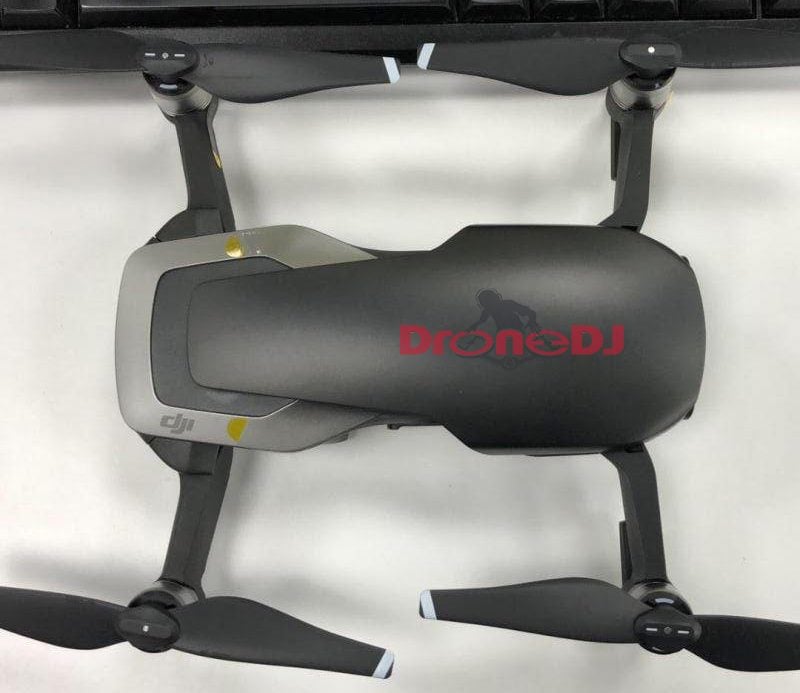DJI has created some pretty incredible drones that range from mid-range models to high-end luxury drones. Below, we compare and contrast the DJI Mavic Air vs DJI Spark to try to unravel which drone is the better buy, with specifications courtesy of Pocket-lint.
DJI Mavic Air vs DJI Spark: Design
- Spark weighs 300 grams
- Mavic Air weighs 430 grams
- Spark measures 143 x 143 x 55 mm
- Mavic Air measures 168 x 184 x 64 mm unfolded (168 x 83 x 49 mm folded)
Perhaps most notable in terms of differences between the two drones is the design. When comparing the DJ Mavic Air vs DJI Spark, it’s hard not to notice the Mavic Air’s foldable arms. Being able to fold up the arms on the Air in order to better transport it gives it a key advantage, and makes the design remarkably similar to its previously released big brother, the Mavic Pro.
Overall, it’s much easier to carry the Mavic Air than the Spark. However, the Spark does have an advantage when it comes to color. If the aesthetics of your drone are a concern, you’ll have your choice between Sky Blue, Lava Red, Meadow Green, Sunrise Yellow, and Alpine White. The Mavic Air, on the other hand, is only available in Alpine White, Onyx Black, and Flame Red.
If you’re looking for cool colors, the Spark comes out on top. Otherwise, when comparing the DJI Mavic Air vs DJI Spark, the Mavic Air comes out on top due to the ease of transport from the foldable arms.
DJI Mavic Air vs DJI Spark: Features and Performance
- Enhanced obstacle avoidance on Mavic Air
- ActiveTrack on both
- Two new QuickShot modes on Mavic Air
- Mavic Air 21 min flight time
- Spark 16 min flight time
- 4km range vs. 2km range
Both the DJI Mavic Air and Spark come with a number of useful features that make operating the drones a breeze. However, while both the Mavic Air and Spark have an obstacle avoidance system to avoid flying directly into trees or buildings, the Mavic Air comes out on top with a detection range of 20 meters away vs the Spark’s 5 meters, also featuring both forward and backward facing sensors. The Air’s Advanced Pilot System also gives the drone an edge when comparing the DJI Mavic Air vs DJI Spark, as it allows easier navigation in complex environments with a variety of obstacles.
As far as performance goes, the Mavic Air surpasses the Spark when it comes to both speed and range, with a 21 minute flight time and 4 km range compared to the 16 minute flight time and 2 km range of the spark. Additionally, the same drone comes out on top when comparing DJI Mavic Air vs DJI Spark in terms of altitude, with a 5000 meter capability vs the Spark’s 4000. With a maximum speed of 42 miles compared to the spark’s 31 top speed, the Mavic Air is the clear winner in both features and performance.

DJI Mavic Air vs DJI Spark: Camera
Spark has 1080p video capture
Mavic Air shoots 4K at 30fps
Spark has 12MP stills and f/2.6 aperture
Mavic Air also with 12MP f/2.6, but with HDR
2-axis gimbal vs. 3-axis
An important consideration for many people when buying a drone is the camera, as a lot of people use the devices for aerial photography and video.
When comparing the DJI Mavic Air vs DJI Spark, the Mavic Air comes out on top once again. In addition to having better design, features, and performance, the optics on this model are quite superior when compared to the Spark.
While the Spark maxes out video recording at full HD resolution, the DJI Mavic Air is capable of recording 4K video at 30 frames per second. It can also record slow motion 1080p video at an astounding 120 frames per second. This is the main difference between the two when comparing the DJI Mavic Air vs DJI Spark, and the two drone models both have a 1/2.3” sensors capable of shooting up to 12 MP stills. Both drones also have f/2.6 aperture lenses, but the Mavic Air is the only one out of the two with an advanced HDR mode.
DJI Mavic Air vs DJI Spark: Price
Perhaps the most notable advantage that the Spark has over the Mavic Air is the price. At around $499, the Spark is much cheaper than the Mavic Air’s $800 price tag – and that’s just the base model.
Basically, the only real advantage the Spark has when comparing the DJI Mavic Air vs DJI Spark is the price. It’s significantly less expensive which excuses some of the drone’s drawbacks, and it may be an attractive buy for those who aren’t ready to commit to an $800 purchase.
DJI Mavic Air vs DJI Spark: Verdict
Overall, we feel that the DJI Mavic Air is the superior product. With that said, the Spark is a capable drone that will meet the needs of most users, and is available for far less. When trying to determine which drone is “better,” the DJI Mavic Air takes the cake. It is, however, significantly more expensive which may make it unrealistic for regular drone hobbyists. If you can stomach the price tag, however, you’ll enjoy the ultimate in drone features and performance.





